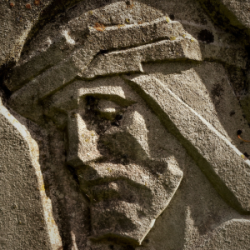Welcome readers! Please subscribe through the buttons on the right.

Our reading this week is from the gospel of Mark:
Jesus left that place and went to the vicinity of Tyre. He entered a house and did not want anyone to know it; yet he could not keep his presence secret. In fact, as soon as she heard about him, a woman whose little daughter was possessed by an impure spirit came and fell at his feet. The woman was a Greek, born in Syrian Phoenicia. She begged Jesus to drive the demon out of her daughter. “First let the children eat all they want,” he told her, “for it is not right to take the children’s bread and toss it to the dogs.” “Lord,” she replied, “even the dogs under the table eat the children’s crumbs.” Then he told her, “For such a reply, you may go; the demon has left your daughter.” She went home and found her child lying on the bed, and the demon gone.
Then Jesus left the vicinity of Tyre and went through Sidon, down to the Sea of Galilee and into the region of the Decapolis. There some people brought to him a man who was deaf and could hardly talk, and they begged Jesus to place his hand on him. After he took him aside, away from the crowd, Jesus put his fingers into the man’s ears. Then he spit and touched the man’s tongue. He looked up to heaven and with a deep sigh said to him, “Ephphatha!” (which means “Be opened!”). At this, the man’s ears were opened, his tongue was loosened and he began to speak plainly. Jesus commanded them not to tell anyone. But the more he did so, the more they kept talking about it. People were overwhelmed with amazement. “He has done everything well,” they said. “He even makes the deaf hear and the mute speak.” (Mark 7:24-37)
This week we read one of my favorite stories in the gospels of Mark—the Syrophoenician woman. I love this story because it paints a very human view of Jesus. This woman is the hero in the story who points out Jesus’ limited way of viewing Gentiles and the scope of his liberation. I believe this story was specifically aimed at early Jesus followers who suffered from the same limitations as Mark’s Jesus did.
It also offers a lot to us in the context of our own blinkered ways of understanding the experiences of those different from ourselves and with whom we share this world. We’ll begin unpacking this story, next.













